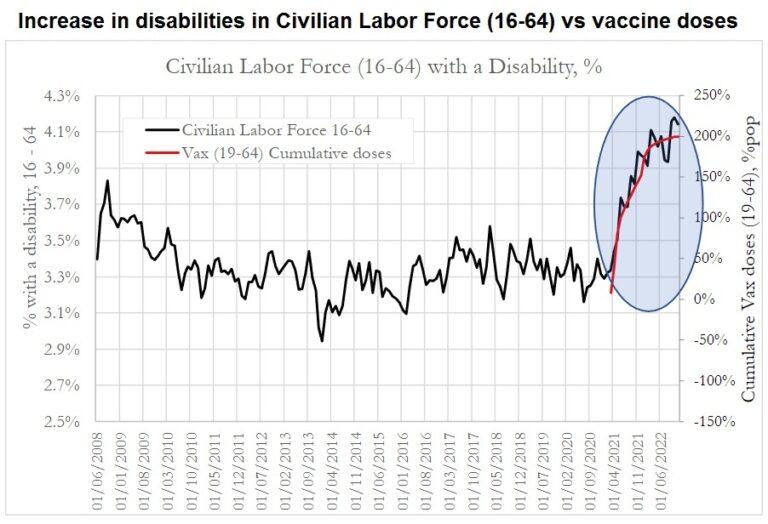One predictable thing about COVID-19 is its ability to rapidly mutate.
Just over a month ago, the XBB.1.5 variant accounted for the largest percentage of reported coronavirus cases in the United States (nearly 17 percent), according to the Centers for Disease Control and Prevention (CDC). But the latest numbers, published at the end of August, show that the fast-spreading EG.5 variant has now taken the lead, making up more than 20 percent of infections, while XBB.1.5 has dropped down to just under 5 percent of COVID cases.
EU.1.1, a variant on the rise earlier this summer, never gained real traction and appears to have petered out.
Nicknamed “Eris,” EG.5 is an offshoot of omicron, just like its XBB relatives. The data suggest that it is very transmissible and may be contributing to an uptick in new COVID-19 cases and hospitalizations.
Health authorities are also keeping close tabs on the heavily mutated BA.2.86 variant (nicknamed Pirola) and newer versions of XBB that have been emerging.
Hospitalizations, Positive Tests, and ER Visits All Rise
For the week ending August 19, COVID-related hospital admissions rose 18.8 percent nationally compared with the week before, with more than 15,000 people newly admitted, according to the CDC COVID Data Tracker.
This marks the sixth consecutive week that hospitalizations have increased. Still, the numbers are much lower than last summer, when weekly COVID-19 hospitalizations hit a peak of nearly 43,000.
Emergency room visits have also been swelling — up 19.4 percent in latest CDC tracking.
Visits among young infants between birth and age 1 have markedly jumped, per the CDC.
“This may, in part, be related to the fact that we only immunize children older than 6 months for COVID-19,” says Dean Winslow, MD, an infectious-disease specialist and a professor of medicine at Stanford University in California. “Note the CDC data show that RSV and influenza both also caused many increased emergency department visits.”
Dr. Winslow stresses that it’s important for older children and all adults to be up-to-date on immunizations, as detailed by the CDC, to protect young children in a household from infections, since they are too young to receive most of these vaccines.
Positive COVID-19 test results have also been ticking up. The CDC’s latest tracking shows a 1.4 percent rise, to 14.9 percent.
States with the highest percentage of positive COVID-19 tests currently include Arkansas, Louisiana, Oklahoma, New Mexico, and Texas, per the CDC.
The increase in EG.5 is not isolated to the United States. The World Health Organization (WHO) issued a risk evaluation recently, stating that there has been a steady increase in the proportion of EG.5 infections reported globally, but that the health threat posed by the variant is low and similar to other circulating variants. The WHO’s variant tracking revealed that EG.5 is the only variant showing an increase right now.
“Clearly, EG.5 is outcompeting the other variants fairly quickly, but based on the data that I have seen, it’s less virulent than earlier variants like delta, which caused a huge amount of mortality,” says Winslow.
In its weekly update of August 30, the WHO reported that COVID cases increased 63 percent globally over the previous 28 days.
Overall COVID-19 Threat Remains Low
With test positivity rising, COVID-19 certainly appears to be spreading, but it’s not causing serious illness in large numbers of people.
Even though there has been a surge in hospitalizations, numbers are still low in most of the country, per the CDC. In the newest CDC reporting, COVID-19 was related to just 2 percent of all deaths in the country.
“Human pathogens [like the COVID virus] tend to evolve in order to more easily spread from person to person, so it’s not a great survival advantage for them to be more lethal,” says Winslow.
He adds that evidence suggests that vaccination may be preventing much of the serious illness, hospitalization, and death. An updated vaccine expected to be available this fall should be even more effective against circulating strains, according to the U.S. Food and Drug Administration.
According to Peter Chin-Hong, MD, a professor of medicine at the University of California in San Francisco who specializes in infectious diseases, the new vaccine will be a closer match to variants such as EG.5, which are expected to dominate in the months ahead.
“Although the planned vaccine is based on XBB.1.5, EG.5, which is dominant right now, is so closely related that the vaccine should provide similar protection as it does for XBB.1.5,” says Dr. Chin-Hong.
Certain Groups Remain More Vulnerable to Severe COVID-19
As the CDC stresses, specific groups of people are more at risk of getting very sick from COVID-19. Adults ages 50 and older are more likely to need hospitalization, intensive care, or a ventilator to help them breathe. Most COVID-related deaths occur in people older than 65.
Individuals who are immunocompromised (have a weakened immune system) because of a medical condition or from immunosuppressive medications or treatments also face greater odds of severe illness, says the CDC. Underlying health conditions such as obesity, chronic pulmonary obstructive disorder, and heart disease heighten this risk as well.
Another group that has weakened defenses against the virus and can become very sick from infections are pregnant individuals and those who were recently pregnant.
Public health authorities advise those at increased risk to talk with a healthcare provider about taking extra precautions, such as wearing a mask, when hospital admission levels in their communities are medium or higher.
What Are the Symptoms of Eris? Should I Get Tested for COVID-19?
To help stop coronavirus spread, especially to these more vulnerable populations, Winslow urges everyone to get tested for COVID-19 if they have upper respiratory systems.
“Newer COVID-19 variants have very mild symptoms in general compared to the earlier variants, and can very much mimic the common cold,” he says. Common COVID-19 symptoms include:
“Most of us would want to know if we’re actually infected with COVID-19 so we can be especially careful and maybe avoid elderly relatives and others who are at greater risk of severe illness,” Winslow adds.
Since the nationwide public health emergency due to COVID-19 ended in May of this year, free testing has become harder to find. But the CDC offers an online tool to help people without health insurance find no-cost testing.
This content was originally published here.




















